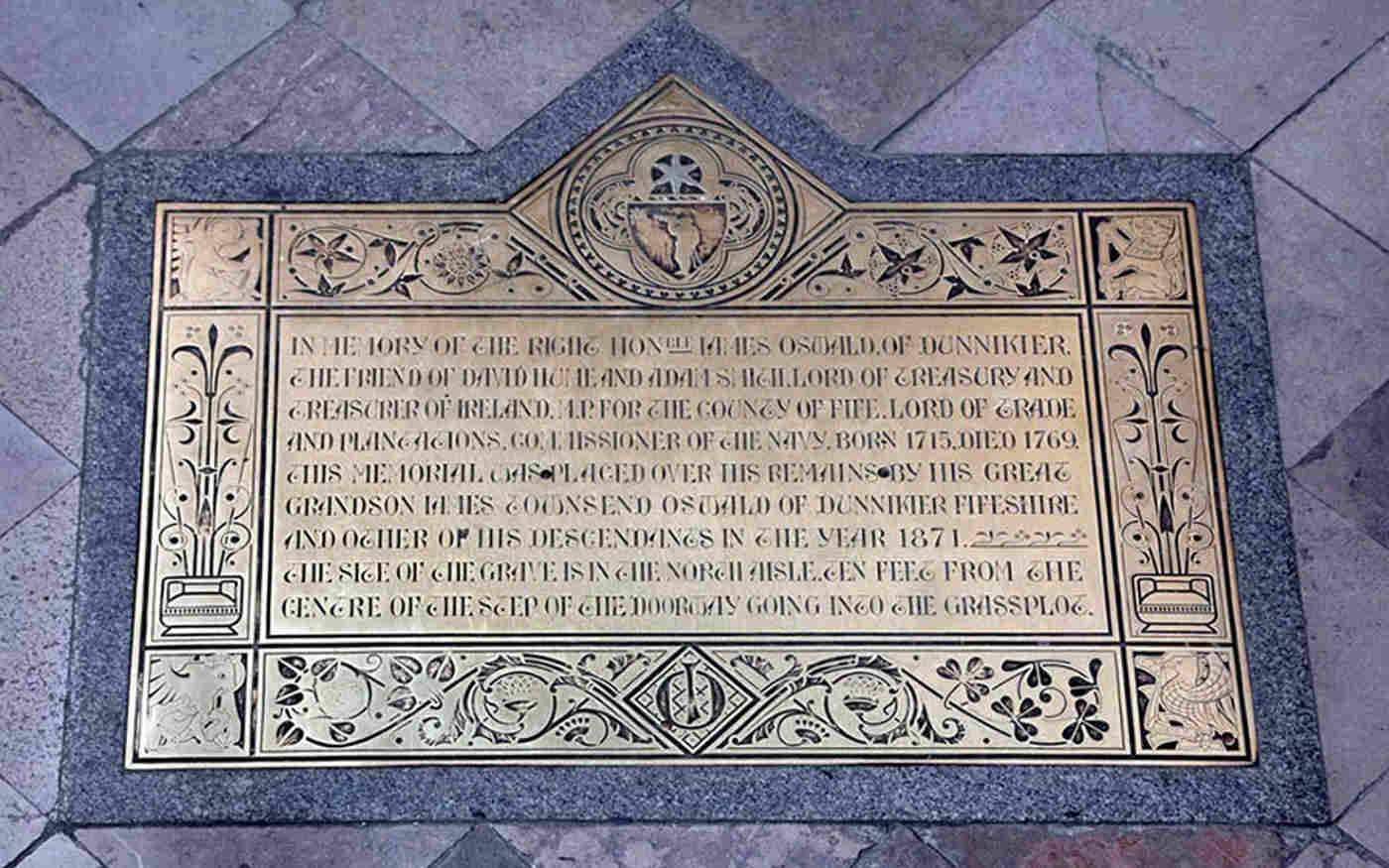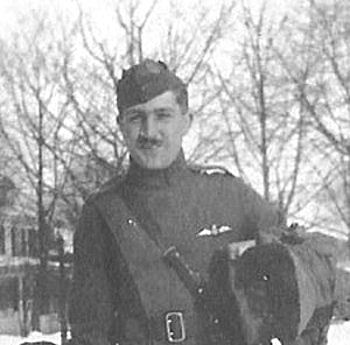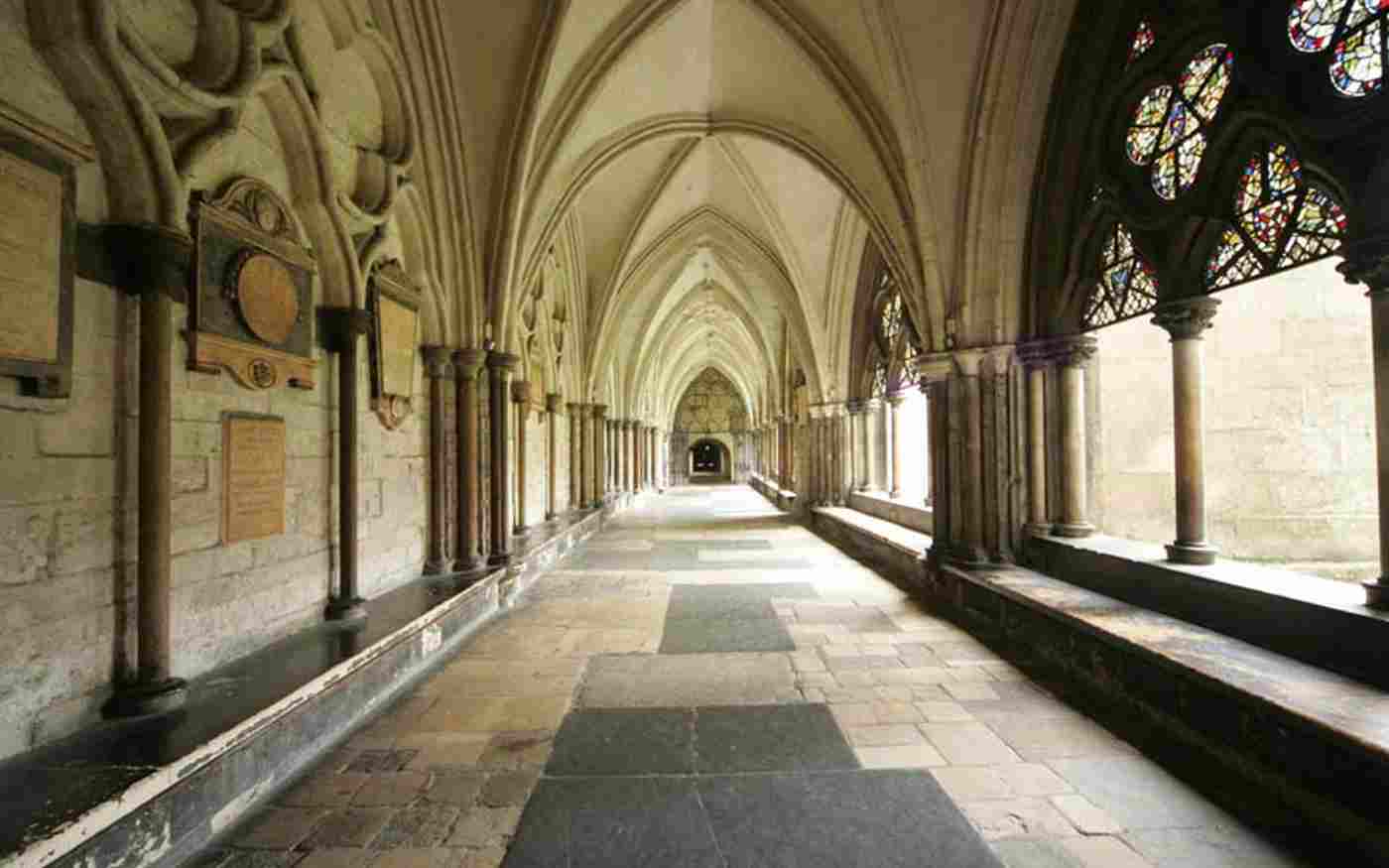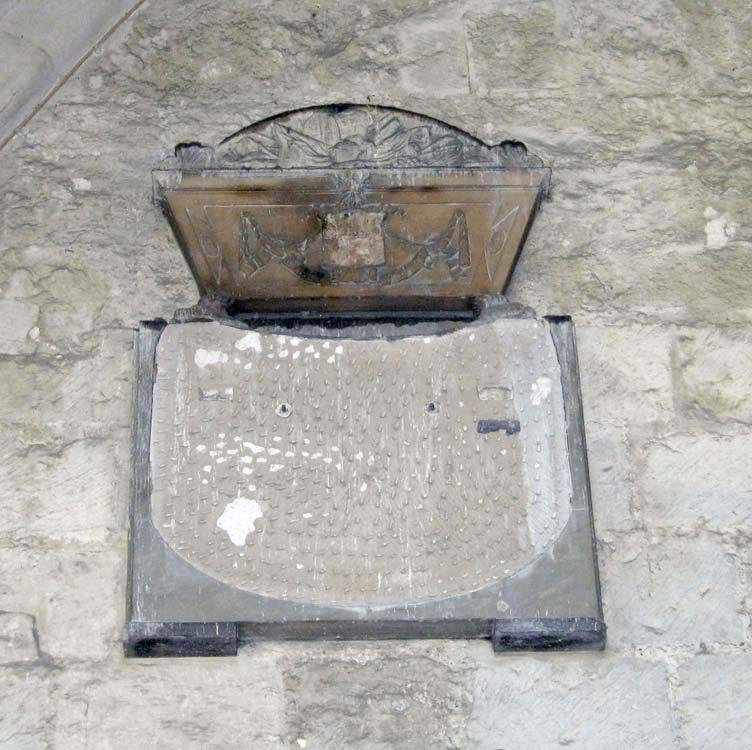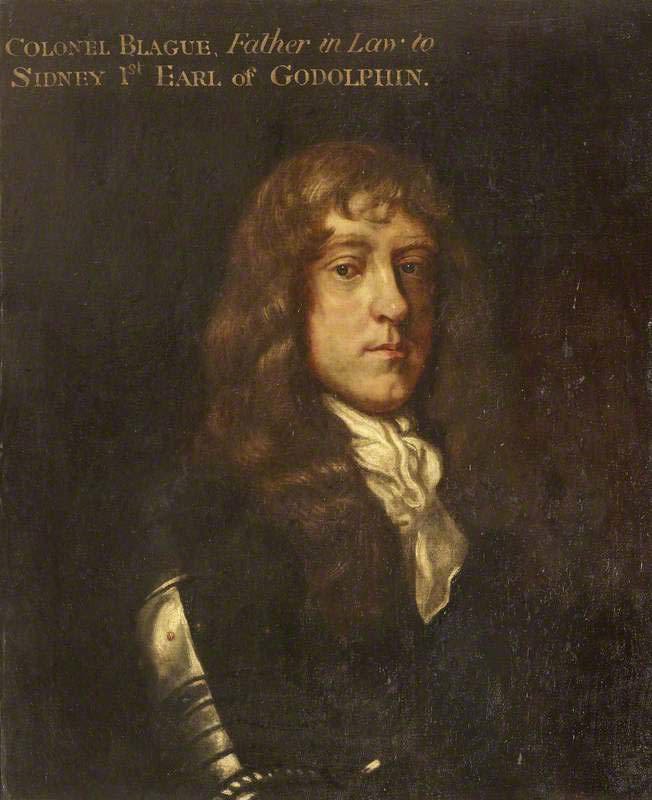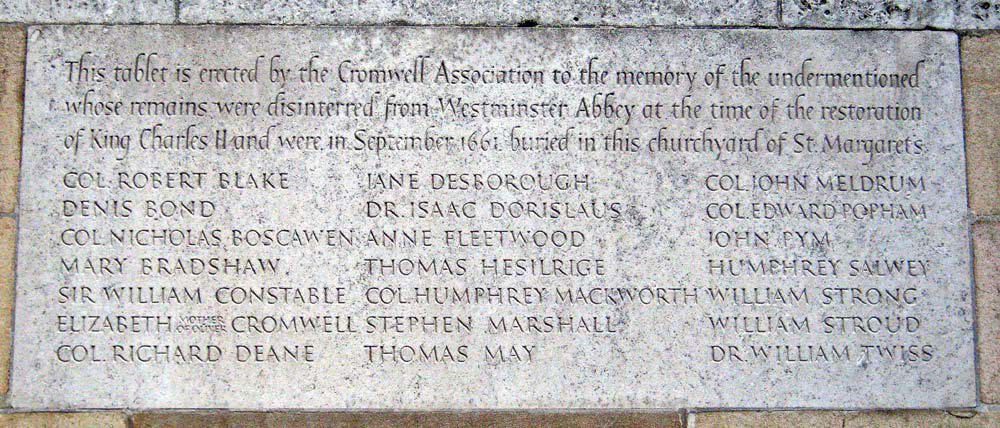George Howe
In the north west tower chapel in the nave of Westminster Abbey is a memorial to George Augustus, 3rd Viscount Howe who died in 1758. It consists of a white marble tablet, standing on lions' heads, on a plinth. On top is a seated mourning female figure (with many broken fingers) resting her left elbow on a sheep's skin lying over a tablet lettered 'Massachusets Bay, New England'.
The monument, by sculptor Peter Scheemakers, was originally erected in the window embrasure on the south side of the nave and had an obelisk with Howe's coat of arms and crest on it, and military trophies and flags behind. The obelisk, arms and trophies were taken away when the monument was moved to its present position in 1884, so that American visitors could see it more easily. (The arms were: "a fess between three wolves' heads couped", for Howe, with a crest: "a lion's gamb, erased".)
The inscription reads:
THE PROVINCE OF MASSACHUSETS BAY, IN NEW ENGLAND BY AN ORDER OF THE GREAT AND GENERAL COURT BEARING DATE FEBy; 1st: 1759, CAUSED THIS MONUMENT TO BE ERECTED TO THE MEMORY OF GEORGE AUGUSTUS LORD VISCOUNT HOWE, BRIGADIER GENERAL OF HIS MAJESTY'S FORCES IN AMERICA, WHO WAS SLAIN JULY THE 6th 1758, ON THE MARCH TO TICONDEROGA, IN THE 34th YEAR OF HIS AGE: IN TESTIMONY OF THE SENSE THEY HAD OF HIS SERVICES AND MILITARY VIRTUES, AND OF THE AFFECTION THEIR OFFICERS AND SOLDIERS BORE TO HIS COMMAND. HE LIVED RESPECTED AND BELOVED: THE PUBLICK REGRETTED HIS LOSS; TO HIS FAMILY IT IS IRREPARABLE.
Howe was born about 1724, the son of Emanuel, 2nd Viscount Howe and his wife Charlotte (von Kielmansegg). He was educated at Westminster School and Eton College. In 1735 he succeeded his father and served as Member of Parliament for Nottingham. He entered the army and by 1757 was commander of the Royal American regiment. The Anglo-American campaigns included one to capture Ticonderoga (New York state) and Crown Point from the French to open a route for the invasion of Canada. At Trout Brook Howe was shot through the heart and his body was taken to St Peter's Church at Albany for burial. General James Wolfe said of him "he was the very best officer in the King's service" and his loss was "one of the greatest that could befall a nation".
Howe was unmarried and his brother Richard (who also attended Westminster School and served in North America) succeeded as 4th Viscount. Richard was later created Lord Howe and has a monument in St Paul's cathedral in London. Brothers William and Thomas were Members of Parliament.
Further Reading
Oxford Dictionary of National Biography 2004 (also for his brothers Richard and William)
"New historical light on the real burial place of George Viscount Howe..." by James Holder, New York State Historical Association, 1911

This image can be purchased from Westminster Abbey Library
Image © 2025 Dean and Chapter of Westminster

This image can be purchased from Westminster Abbey Library
Image © 2025 Dean and Chapter of Westminster
